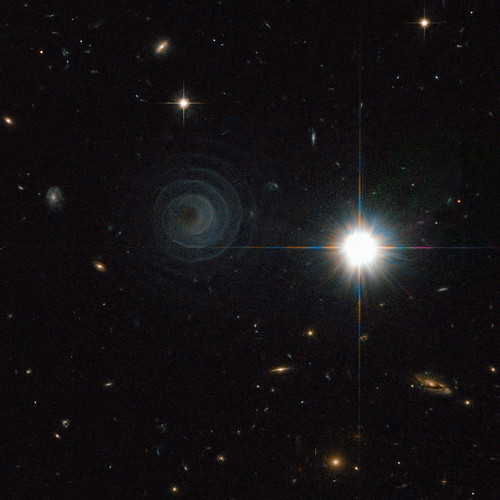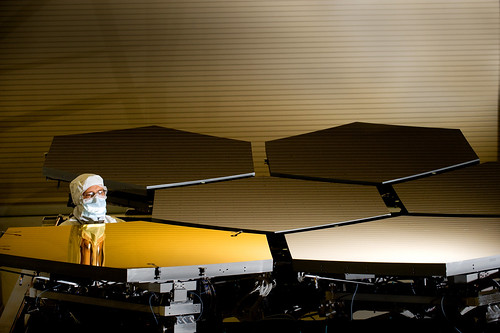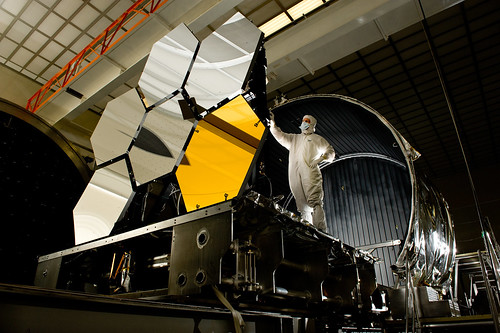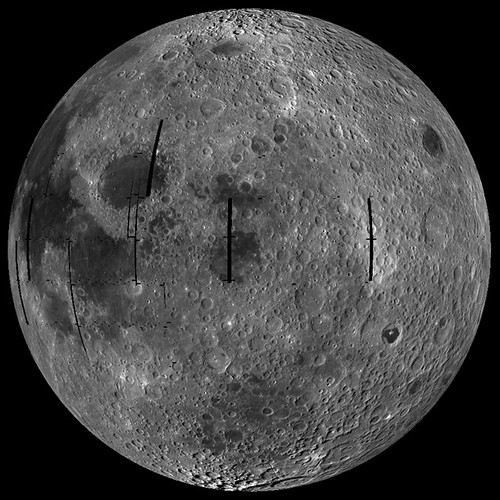Awesomeness Round-up – 9/13/10
- By Maggie Masetti
- September 13, 2010
- 1 Comment
Another milestone for the James Webb Space Telescope – the first primary mirror segment to be coated in gold (it’s a flight spare and engineering design unit) is undergoing cryo testing! Isn’t it pretty? I can’t wait to see what the whole mirror assembly will look like once it’s all coated in gold!
Here’s a gorgeous and weird image courtesy of the Advanced Camera for Surveys on the Hubble Space Telescope!

It’s an unusual pre-planetary nebula, known as IRAS 23166+1655, around the star LL Pegasi. Head to the Hubble site to find out what caused this phenomena!
How about some exoplanet news? “Hot Jupiter” exoplanets (those large planets 3-4 times closer to their star than Mercury is to ours) are quickly destroyed by tidal forces, which is why we don’t see many of them. Apparently globular clusters are a tough place for planets as well. This web feature has more information on the science behind this and the use of the Kepler mission to look for planets in these clusters.
Finding planets with ground-based telescopes can be difficult because planets are so dim in comparison with their companion stars. However, an upgrade to one of ESO’s near-infrared telescopes led to the discovery of an exoplanet in the dusty disk surrounding the young star Beta Pictaurus. The story behind this observation is interesting, so take a look at the linked blog. Below is the picture of the planet.
Did you know that we had a close encounter with two asteroids last week? Yep – asteroid 2010 RX30 passed 154,100 miles away from Earth (that’s 60 percent the distance between the Earth and the Moon). The asteroid itself was about 10-20 meters in size. Asteroid 2010 RF12, a little smaller at around 6 to 14 meters in size passed even closer, at 20% of the Earth-Moon distance (0.2 lunar distances (just over 49,000 miles) a few hours later. Two amateur astronomers got four exposures of 2010 RX30, and made an animation out of them.
Here’s a view of the Moon you’ve probably never seen before (and that’s because it’s a view impossible to see from the Earth!)
This is a mosaic of over 3700 images captured by the Lunar Reconnaissance Orbiter’s (LRO) Wide Angle Camera that show the Moon’s “east” side – the side you’d see if you were hovering above the moon and following it as it orbited the Earth. This is a confusing perspective, but this Bad Astronomy blog entry might help explain what you’re seeing!
In case you doubted the worth of citizen science…
So-called “Green Pea” galaxies, which were first discovered in 2007 by amateur astronomers using Galaxy Zoo to help classify galaxies, may actually be really interesting. It turns out that they are extremely compact galaxies that are low in metals (elements other than hydrogen and helium) undergoing intense star formation. Green Pea galaxies may be help astronomers understand more about galaxy evolution and star formation. Check out Science Daily for more on the classification of these galaxies and on other citizen science discoveries.







Those are some stunning photos